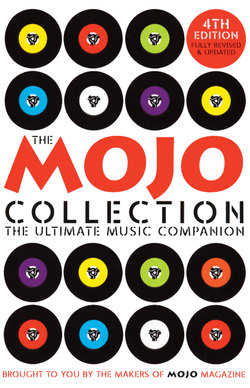Читать книгу The Mojo Collection - Various Mojo Magazine - Страница 72
На сайте Литреса книга снята с продажи.
The Butterfield Blues Band East-West US blues rock pioneers. At the crossroads, but headed for the upper stratosphere.
ОглавлениеRecord label: Elektra
Produced: Paul A Rothchild, Mark Abramson and Barry Friedman
Recorded: New York and LA; spring–summer 1966
Released: December 1966
Chart peaks: None (UK) 65 (US)
Personnel: Paul Butterfield (v, hm); Mike Bloomfield (g); Elvin Bishop (g); Mike Naftalin (p); Jerome Arnold (b); Billy Davenport (d)
Track listing: Walkin’ Blues; Get Out Of My Life, Woman; I Got A Mind To Give Up Living; All These Blues; Work Song; Mary Mary; Two Trains Running; Never Say No; East-West
Running time: 44:21
Current CD: Not currently available
Further listening: The Paul Butterfield Anthology (1998) (2-CD retrospective)
Further reading: The Adventures Of Mike Bloomfield And Al Kooper With Paul Butterfield And David Clayton Thomas (Ken Brooks, 1999)
Download: HMV Digital
In some ways The Butterfield Blues Band’s second album didn’t measure up to their electrifying debut, an unprecedented blues-rock blast from start to finish and as close as we’re likely to get to a hot night in a bar on Chicago’s South Side in 1964. East-West was more stylistically scattered, reflecting in part a piecemeal recording schedule necessitated by the tour demands of a hot underground following. But its enduring strength is its diversity, a reflection of a pop world looking to flex its new-found creative muscles.
East-West is known first and foremost for its two ‘long songs’. The Butterfield crew’s instrumental workouts on Nat Adderly’s Work Song (7:53) and Mike Bloomfield’s titanic title jam (13:10) featured the expanded canvas and solo virtuosity previously associated with jazz. Rock did a lot of growing up with these two songs. ‘East-West was such a radical departure, melodically, structurally and chordally, from the rock’n’roll modes and licks at that time,’ Bloomfield explained to Tom Yates. ‘It was a long, long series of solos using scales that just had not been played by rock’n’roll guitar players. But believe me, I knew that they were not my scales. They were things I’d heard on John Coltrane records. I’d been listening to a lot of Ravi Shankar and guys who played modal music. These two tunes really broke a lot of ground for other guitar players. I think Carlos Santana still plays that way.’
There are a couple of undistinguished blues fillers, almost as if the band were losing interest in the simple structures, but their versions of Robert Johnson’s Walkin’ Blues, Allen Toussaint’s Get Out Of My Life Woman and Mike Nesmith’s Mary Mary are all top drawer. And despite the epic performances, Mike Bloomfield’s best demonstration of guitar wizardry may be the intro to I Got A Mind To Give Up Living, where he goes from a moan of despair to a howl of pain and then tears, all in the space of 42 seconds.
The Butterfield Band’s take on virtuosity was markedly different from most of what it inspired. Bloomfield was the first real guitar hero of the 1960s, but he was part of a group that could soar with him. (Butterfield himself could match him solo for solo on harp.) Later, blues-rock bands became just rhythm sections there to keep the beat while some kid with no life experience would ‘jam the blues’ past the threshold of annoyance. Therefore, we should revere the Butterfield Blues Band’s version of blues rock, not blame them for the idiot children it spawned.
